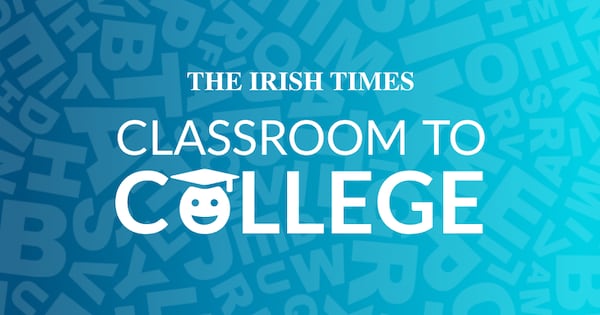During the pandemic, teachers did the unthinkable: assessing their own students for State certification. This led to grades being artificially inflated which, in turn, led to a significant jump in CAO points.
This year, however, is the first in which inflated grades are being slowly unwound. While it’s a fairer reflection of how students actually performed in the exams, it nonetheless may put them at a disadvantage, particularly for higher-points courses.
This is because a significant cohort of students – usually about 20 per cent – don’t go straight from school to third level. Instead, among other reasons, they may defer, they may be a mature student or they may have done a year in further education (an increasingly popular option).
So students who sat their Leaving Cert between 2020 and 2024 will have higher grades and, therefore, higher CAO points than the class of 2025 – potentially putting them in pole position for the most competitive courses.
RM Block
Indeed, elsewhere in today’s coverage, our columnist Brian Mooney says that every student can expect to have at least one grade less than students from recent years – translating to 12 fewer CAO points.
There is understandable angst about this.
In addition, senior academics in higher education institutions have consistently raised concerns that students entering college with inflated grades were simply not prepared for the challenges of a college place.
How this plays out – and how it goes down with parents and students today – remains to be seen. It’s worth pointing out that, while there’s always hype about exam results and high-points courses – not least from this newspaper, if we’re honest – the opening up and expansion of new routes to further and higher education means students have more choice and routes to education than ever before.
How has it all gone? Most years, there’s little to no difference, on average, between how many students got a H1, H2, H3 and so on in any given subject – it’s all within the bell curve. But this year, there has been – as expected – a drop in the average grades. Here, we take a look at some key subjects and ask: what’s up, what’s done and what has stayed the same?
Irish
Although we are collectively not great at speaking in our native language, Irish actually has the highest number of top grades outside minority languages and music – subjects that tend to attract students who are already reasonably skilled at them.
In 2023, 15.7 per cent of students received a H1 in the higher-level paper, a rise of 3 per cent from the previous year. In 2024, there was already an indication of a slight downward trend, with 14.1 per cent of students getting top marks, 19.9 per cent receiving a H2 and 23.7 per cent picking up a H3.
This year there’s a fairly significant drop, with 11 per cent securing a H1 (down 3.1 per cent), but the number of H2s is up to 21.4 per cent, while H3s rise to 24.3 per cent.
At ordinary level, 3.8 per cent got an O1 grade last year, whereas this year, it’s down to just 0.8 per cent. O2s fall from 11 per cent to 7.9 per cent, and O3 grades go from 22.2 per cent to 19.9 per cent.
As was the case last year, just 0.2 per cent received a higher-level H8 grade – this is considered a “fail” and no points are awarded.
English
English has always been one of the harder subjects to get a H1 in, perhaps because marking schemes have always struggled to capture the subjective nature of good or bad writing.
This year, 5 per cent of students got a H1 at higher level, compared with 6.9 per cent last year, while 15.2 per cent got a H2 (a drop of 2.3 per cent from last year). The good news for students is that the number of H3s – not a shabby grade – is up from 29.3 per cent in 2024 to 30.5 per cent in 2025.
At ordinary level, meanwhile, 44 per cent received an O1, O2 or O3, compared with 49.9 per cent last year.
Maths
Bonus points for higher-level maths were reintroduced in 2012, with every student who gets a H6 or higher gaining a very valuable 25 extra CAO points.
The aim of bonus points was to encourage more students to take the subject at higher level, and a recognition that higher-level maths is particularly challenging and takes up more precious study time.
But there’s a strong argument that they’re deeply unfair. Students who don’t take higher-level maths are automatically at a 25-point disadvantage, which can make all the difference. Many, therefore, feel forced to do higher level even if they don’t feel able, and some teachers have said they ultimately have to spend so much time on the weaker higher-level students that there isn’t enough time to support those who really excel at maths.
Last year, the number of H1s was at 12.6 per cent; this year, that figure has declined to 11 per cent.
Overall, 94.6 per cent of all the students who sat the higher-level paper have received the full 25 bonus points, compared with 96.6 per cent in 2024. Although that’s bad news for the additional 2 per cent of students who missed out, most can breathe a sigh of relief.
Meanwhile, at ordinary level the number of O1s is down significantly, with just 6 per cent taking top marks compared with 11.6 per cent last year.
Other subjects
- History: In 2024, 56.5 per cent of higher-level history students received a H1, H2 or H3. This year, 53.8 per cent scored in the same bracket.
- Biology: 50.4 per cent of higher-level students got a H1, H2 or H3 in 2024, compared with 49 per cent this year
- Geography: This year, 47.6 per cent of higher-level students got a H1, H2 or H3, compared with 55.6 last year. This is one of the steepest declines in marks for any subject in recent years, but disappointed students should keep in mind that they didn’t necessarily do “worse” than previous years; the marking scheme simply changed to reflect grade deflation.
- French: Another very sharp decrease. Last year, 56.3 per cent of students picked up a H1, H2 or H3; this year, it’s down to 49.2 per cent.
Higher Level H1s
- Irish - 2025, 11% - 2024, 14.1% (Down 3.1%)
- English - 2025, 5% - 2024, 6.9% (Down 1.9%)
- Maths - 2025, 11% - 2024, 12.6% (Down 1.6%)
- History - 2025, 12.9% - 2024, 14% (Down 1.1%)
- Geography - 2025, 8.3% - 2024, 11.2% (Down 2.9%)
- French - 2025, 12.4% - 2024, 16.3% (Down 3.9%)
- German - 2025, 13.7% - 2024, 15.7% (Down 2%)
- Spanish - 2025, 13.3% - 2024, 15.7% (Down 2.4%)
- Physics - 2025, 18.8% - 2024, 20.7% (Down 1.9%)
- Chemistry - 2025, 17.8% - 2024, 22% (Down 4.2%)
- Biology - 2025, 15.7% - 2024, 19% (Down 3.3%)













